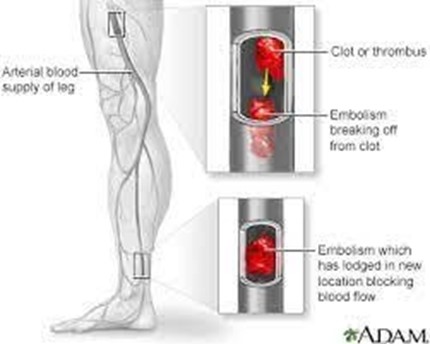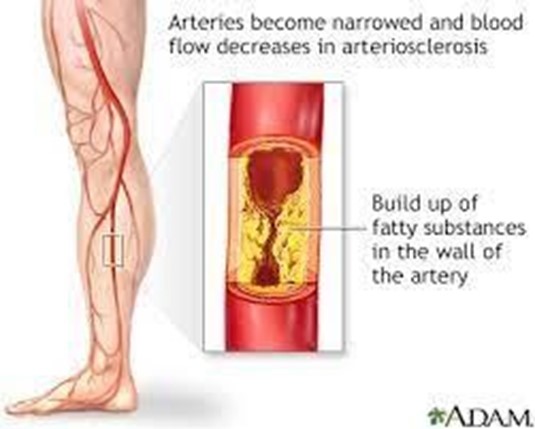Nursing Exam 2 Cardiovascular and Respiratory
ATI Nursing Exam 2 Cardiovascular and Respiratory
Total Questions : 6
Showing 6 questions Sign up for moreIn assessing Mr. Cody's major risk factors for heart disease, which would the nurse want to include when taking a history?
Explanation
a. Incorrect
This choice includes some relevant risk factors such as family history, hypertension, and age. However, it fails to include other significant risk factors such as smoking, obesity, diabetes, and high cholesterol, which are well-established contributors to heart disease.
b. Correct
This choice includes a comprehensive list of major risk factors for heart disease. It covers smoking, hypertension, obesity, diabetes, family history, high cholesterol, and stress. These risk factors have been extensively studied and identified as significant contributors to the development of heart disease.
c. Incorrect
This choice includes some risk factors like high cholesterol, diabetes, and smoking. However, it does not include other important factors such as family history,
hypertension, obesity, and stress, which are widely recognized as major risk factors for heart disease.
d. Incorrect
This choice includes some risk factors such as obesity, diabetes, stress, and high cholesterol. However, it fails to include other significant factors like smoking, hypertension, and family history, which are well-known risk factors for heart disease.
When assessing Mrs. Bradshaw, the nurse documents the left femoral pulse as 0/0-4+. Which of the following findings would the nurse expect at the left dorsalis pedialis pulse?
Explanation
a. Incorrect
This choice suggests a left dorsalis pedis pulse of 2+/0-4+. However, since the left femoral pulse was documented as 0/0-4+, indicating no pulse, it is not expected for a pulse to be present in the left dorsalis pedis. Therefore, this choice is incorrect.
b. Incorrect
This choice suggests a left dorsalis pedis pulse of 3+/0-4+. Again, since the left femoral pulse was documented as 0/0-4+, indicating no pulse, it is not expected for a pulse to be present in the left dorsalis pedis. Therefore, this choice is incorrect.
c. Incorrect
This choice suggests a left dorsalis pedis pulse of 1+/0-4+. However, as mentioned earlier, the left femoral pulse was documented as 0/0-4+, indicating no pulse. Therefore, it is not expected for a pulse to be present in the left dorsalis pedis. This choice is incorrect.
d. Correct
This choice suggests a left dorsalis pedis pulse of 0/0-4+. Since the left femoral pulse was documented as 0/0-4+, indicating no pulse, it is expected that the left dorsalis pedis pulse will also be absent or diminished. Therefore, this choice is correct.
Sixty-five-year-old Harold Wisenheimer is experiencing pain in his left calf when he exercises, which disappears after resting for a few minutes. The nurse recognizes this description is most consistent with:
Explanation
a. Incorrect
Ischemia caused by a complete blockage of an artery supplying the left leg would typically result in more severe and constant pain, even at rest. The fact that the pain disappears after resting for a few minutes suggests that the blood flow is temporarily restored. Therefore, this choice is incorrect.
b. Correct
The description of pain in the left calf when exercising, which disappears after resting for a few minutes, is most consistent with claudication caused by partial blockage of an artery supplying the left leg. During exercise, the demand for oxygen-rich blood increases, but the narrowed or partially blocked artery is unable to supply enough blood, leading to ischemia and resulting pain. Resting allows the oxygen supply to catch up, relieving the pain. This is a characteristic feature of claudication, which is commonly associated with peripheral arterial disease (PAD).
c. Incorrect
Claudication is not caused by venous abnormalities but rather by arterial insufficiency. Venous abnormalities in the left leg may result in symptoms such as swelling, discoloration, or a heavy, achy sensation, but not the pain associated with exercise and subsequent relief after rest. Therefore, this choice is incorrect.
d. Incorrect
Venous obstruction of the left leg would typically present with different symptoms, such as swelling, discoloration, or pain that worsens with prolonged standing or sitting. The pattern of pain during exercise and relief after rest is not consistent with venous obstruction. Therefore, this choice is incorrect.

Which of the following situations best describes a person who is at MOST risk for development of deep vein thrombosis (DVT)?
Explanation
a. Incorrect
While smoking is a risk factor for various health conditions, including cardiovascular diseases, it is not considered the most significant risk factor for the development of deep vein thrombosis (DVT). Other factors, such as immobility, surgery, or underlying medical conditions, have a stronger association with DVT. Therefore, this choice is incorrect.
b. Incorrect
Taking anticoagulant medication, such as blood thinners, is actually a preventive measure for the development of DVT rather than a risk factor. Anticoagulants are
commonly prescribed to individuals at high risk of DVT to reduce the likelihood of blood clot formation. Therefore, this choice is incorrect.
c. Incorrect
Rationale: Chemotherapy is associated with an increased risk of blood clot formation, including DVT. However, it is not the most significant risk factor for DVT. Other
factors, such as immobility or underlying medical conditions, may pose a higher risk. Therefore, this choice is incorrect.
d. Correct
Prolonged bed rest or immobility is a well-known and significant risk factor for the development of DVT. When a person remains in the same position for an extended period, blood flow slows down, increasing the risk of clot formation. This risk is particularly high after four days of immobility. Therefore, this choice is correct.
In assessing 70-year-old Juan Garcia, he nurse finds the following: BP 140/100 mm Hg; HR 104 and slightly irregular, split sound 2 (52). Which these findings can be explained by expected hemodynamic changes related to age?
Explanation
a. Incorrect
Ischemia caused by a complete blockage of an artery supplying the left leg would typically result in constant pain, even at rest. The fact that the pain disappears after resting for a few minutes suggests that the blood flow is temporarily restored.
Therefore, this choice is incorrect.
b. Correct
The description of pain in the left calf when exercising, which disappears after resting for a few minutes, is most consistent with claudication caused by partial blockage of an artery supplying the left leg. During exercise, the demand for oxygen-rich blood
increases, but the narrowed or partially blocked artery is unable to supply enough blood, leading to ischemia and resulting pain. Resting allows the oxygen supply to catch up, relieving the pain. This is a characteristic feature of claudication, which is commonly associated with peripheral arterial disease (PAD).
c. Incorrect
Claudication is not due to venous abnormalities in the left leg but rather arterial insufficiency. Venous abnormalities may result in symptoms such as swelling,
discoloration, or a heavy, achy sensation, but not the pain associated with exercise and subsequent relief after rest. Therefore, this choice is incorrect.
d. Incorrect
Venous obstruction of the left leg would typically present with different symptoms, such as swelling, discoloration, or pain that worsens with prolonged standing or
sitting. The pattern of pain during exercise and relief after rest is not consistent with venous obstruction. Therefore, this choice is incorrect.
Sixty-seven-year-old Paul Simon states that he recently began to have pain in his left calf when climbing the 10 stairs to his apartment. This pain is relieved by sitting for about 2 minutes; then he is able to resume his activities. This patient is most likely experiencing:
Explanation
a. Incorrect
Sore muscles typically result from overexertion or physical activity and are not typically associated with pain that specifically occurs during climbing stairs and is relieved by resting. The described pattern of pain and relief does not align with sore muscles. Therefore, this choice is incorrect.
b. Correct
The description of pain in the left calf during stair climbing, which is relieved by sitting for a few minutes, is most consistent with claudication. Claudication refers to pain or cramping in the muscles, often in the calf, that occurs with exercise or activity and is relieved by rest. It is commonly caused by decreased blood flow due to arterial narrowing or blockage, typically seen in peripheral arterial disease (PAD). The symptoms described by Paul Simon align with the classic features of claudication. Therefore, this choice is correct.
c. Incorrect
Rationale: Venous insufficiency typically presents with symptoms such as swelling, discoloration, or a heavy, achy sensation in the legs. It is not typically associated with pain during specific activities like climbing stairs. The described symptoms are not indicative of venous insufficiency. Therefore, this choice is incorrect.
d. Incorrect
Rationale: Muscle cramps are characterized by sudden and involuntary contractions of a muscle. While muscle cramps can occur during physical activity, they are not typically relieved by sitting and resting for a few minutes. The described pattern of pain and relief is not consistent with muscle cramps. Therefore, this choice is
incorrect.

You just viewed 6 questions out of the 6 questions on the ATI Nursing Exam 2 Cardiovascular and Respiratory Exam. Subscribe to our Premium Package to obtain access on all the questions and have unlimited access on all Exams. Subscribe Now



